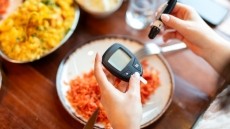Vitamin D levels may affect heart health - study
large study from the US that also calls for studies to assess a
direct benefit of vitamin supplements.
"This is the first study, to our knowledge, to demonstrate a significant association between low vitamin D levels and CVD risk factors in a nationally representative sample," wrote lead author David Martins from Charles R. Drew University of Medicine and Science. "Previous studies suggesting similar associations between low serum vitamin D levels and CVD risk factors were limited to subpopulations and small study samples," he added. Interest in vitamin D has been increasing in recent months with an increasing number of studies linking the vitamin to protection against osteoporosis and certain cancers. There is also evidence that a higher intake of vitamin D may be helpful in preventing and treating high blood pressure, fibromyalgia, diabetes mellitus, multiple sclerosis and rheumatoid arthritis. Vitamin D refers to two biologically inactive precursors - D3, also known as cholecalciferol, and D2, also known as ergocalciferol. The former, produced in the skin on exposure to UVB radiation (290 to 320 nm), is said to be more bioactive. The latter is derived from plants and only enters the body via the diet, from consumption of foods such as oily fish, egg yolk and liver. Both D3 and D2 precursors are hydroxylated in the liver and kidneys to form 25- hydroxyvitamin D (25(OH)D), the non-active 'storage' form, and 1,25-dihydroxyvitamin D (1,25(OH)2D), the biologically active form that is tightly controlled by the body. The researchers used data for 7186 men and 7902 women obtained from the Third National Health and Nutrition Examination Survey. The average blood level of 25(OH)D was 30 ng/mL (75 nmol/L), while levels were generally lower in women, the elderly, racial/ethnic minorities, and obese, hypertensive, and diabetic people. The researchers report that low levels of vitamin D (less than 21 ng/mL) were associated with an increased prevalence of hypertension (30 per cent), diabetes mellitus (98 per cent), obesity (1.29), and high serum triglyceride levels (47 per cent) compared to those with higher 25(OH)D levels (at least 37 ng/mL). "This study provides important information to support a reassessment of the current position on what levels of vitamin D constitute vitamin D insufficiency and necessitate vitamin D repletion," wrote the researchers. "The current recommended levels of serum 25(OH)D are primarily based on levels needed to maintain optimum bone health and prevent rickets but do not address the levels of vitamin D that may be necessary to minimize the prevalence of CVD risk factors. "Although the implication of the present findings for the excess prevalence of CVD risk factors remains to be determined, note that the inverse relationship between the prevalence of several CVD risk factors (obesity, diabetes mellitus, and hypertension) and 25(OH)D levels continued well into the fourth quartile, suggesting that levels of 37 ng/mL or greater (92 nmol/L) may confer additional health benefits," they concluded. "Prospective studies are warranted to assess a direct effect of vitamin D on select CVD risk factors and to establish the optimum serum level of vitamin D." Interest in vitamin D has been increasing around the world for all age groups, with calls to increase vitamin D intake growing louder. Fifteen experts from universities, research institutes and university hospitals around the world recently called for international agencies to "reassess as a matter of high priority" dietary recommendations for vitamin D because current advice is outdated and puts the public at risk of deficiency (The American Journal of Clinical Nutrition, Vol. 85, pp. 860-868). A review of the science reported that the tolerable upper intake level for oral vitamin D3 should be increased five-fold, from the current tolerable upper intake level (UL) in Europe and the US of 2000 International Units (IU), equivalent to 50 micrograms per day, to 10,000 IU (250 micrograms per day). Source: Archives of Internal Medicine 2007, Volume 167, Pages 1159-1165 "Prevalence of Cardiovascular Risk Factors and the Serum Levels of 25-Hydroxyvitamin D in the United States - Data From the Third National Health and Nutrition Examination Survey" Authors: D. Martins, M. Wolf, D. Pan, A. Zadshir, N. Tareen, R. Thadhani, A. Felsenfeld, B. Levine, R. Mehrotra, K. Norris












